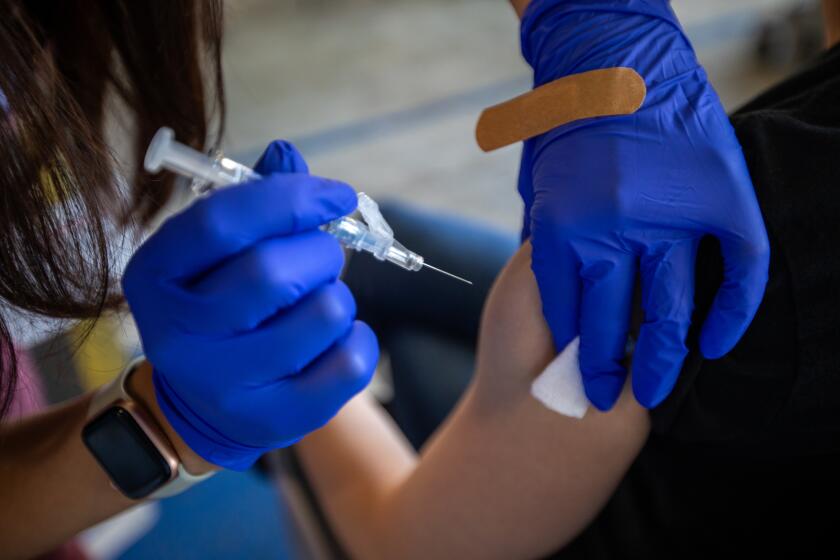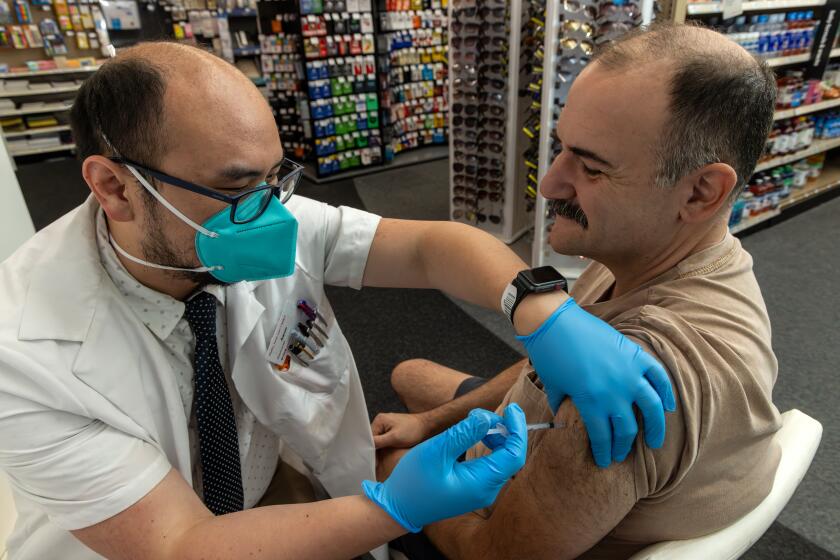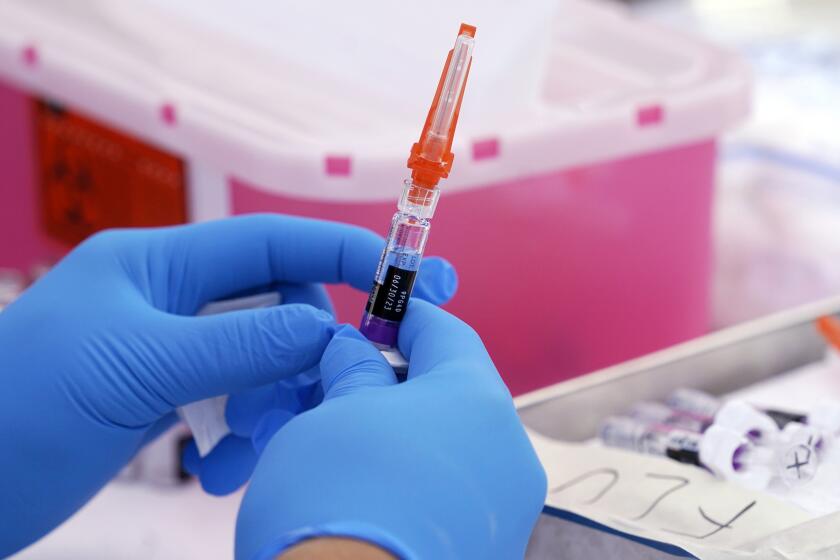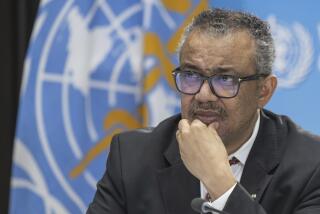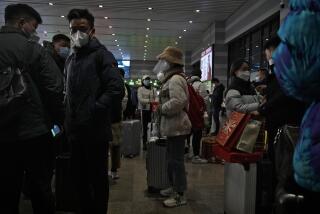WHO asks China for more information on rise in cases of respiratory illness and pneumonia
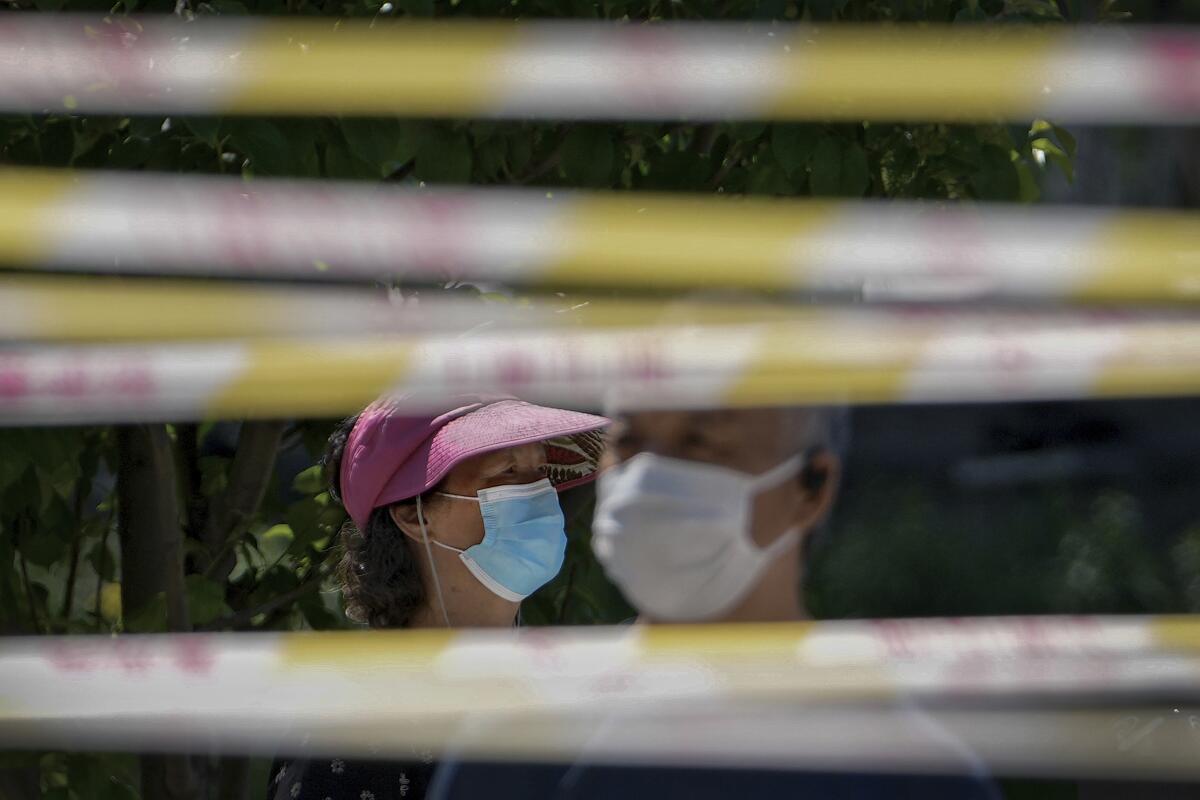
- Share via
GENEVA — The World Health Organization says it has made an official request to China for information about a potentially worrisome spike in respiratory illnesses and clusters of pneumonia in children.
The United Nations health agency cited unspecified media reports and a global infectious disease monitoring service as reporting clusters of undiagnosed pneumonia in children in northern China. In a statement late Wednesday, the WHO said it was unclear whether those were linked to a rise in respiratory infections reported by Chinese authorities.
Outside scientists said the situation warranted close monitoring but were not convinced that the recent spike in respiratory illnesses in China signaled the start of a new global outbreak.
The emergence of new flu strains or other viruses capable of triggering pandemics typically starts with undiagnosed clusters of respiratory illness. Both SARS and COVID-19 were first reported as unusual types of pneumonia.
The WHO noted that authorities at China’s National Health Commission on Nov. 13 reported an increase in respiratory diseases, which they said was due to the lifting of COVID-19 lockdown restrictions. Other countries also saw a jump in respiratory diseases such as respiratory syncytial virus, or RSV, when pandemic restrictions ended.
The WHO said media reports about a week later cited clusters of undiagnosed pneumonia in children in northern China.
Los Angeles County has confirmed its first flu death of the season, and with the bulk of the season still ahead, health officials are reminding residents to get vaccinated.
“It is unclear if these are associated with the overall increase in respiratory infections previously reported by Chinese authorities, or separate events,” the WHO said, adding that it had requested more details from China, via an international legal mechanism, about currently circulating viruses and any increased burden on hospitals.
Dr. David Heymann of the London School of Hygiene and Tropical Medicine said there was a likely background of seasonal respiratory infections.
“The challenge is to discern the outbreaks and determine the cause,” Heymann said in a statement, adding that genetic sequencing and isolating cases would be critical. He led the WHO’s response to the 2002-03 SARS outbreak.
Francois Balloux of University College London said the current wave of disease in China was likely due to respiratory illnesses like flu, RSV or a bacterial infection.
The new flu and COVID vaccines are specifically formulated to protect against particular viral strains that officials feel will be prevalent this fall and winter.
He said China was probably experiencing a significant wave of childhood infections because this was the first winter since lockdown restrictions were lifted, which likely reduced children’s immunity to common bugs.
“Unless new evidence emerges, there is no reason to suspect the emergence of a novel pathogen,” Balloux said.
The WHO said that northern China had reported a jump in influenza-like illnesses since mid-October compared with the previous three years. It is rare for the U.N. health agency to publicly ask for more detailed information from countries, as such requests are typically made internally.
The outbreaks have swamped some hospitals in northern China, including in Beijing, and health authorities have asked the public to take children with less severe symptoms to clinics and other facilities.
U.S. health officials say at least seven states are seeing high levels of the flu and that cases are rising in other parts of the country.
The average number of patients in the internal medicine department at Beijing Children’s Hospital topped 7,000 per day, exceeding the hospital’s capacity, state-owned China National Radio said in an online article earlier this week.
China’s National Health Commission, in a written Q&A posted online by the official Xinhua News Agency, suggested Thursday that children with mild symptoms “first visit primary healthcare institutions or pediatrics departments of general hospitals” because large hospitals are crowded and have long waiting times.
The health commission said it has been paying close attention to the high incidence of infectious diseases among children and is “guiding local authorities to enhance coordinated scheduling and implement a tiered diagnosis and treatment system.”
After SARS broke out in southern China in 2002, Beijing officials told doctors to hide patients, with some being driven around in ambulances while WHO scientists were visiting the country. That prompted the WHO to threaten to close its office in China.
News Alerts
Get breaking news, investigations, analysis and more signature journalism from the Los Angeles Times in your inbox.
You may occasionally receive promotional content from the Los Angeles Times.
Nearly two decades later, China stalled on sharing critical details about the new coronavirus with the U.N. health agency after the new virus emerged in late 2019. The WHO publicly applauded China’s commitment to stopping the coronavirus — weeks before it started causing explosive epidemics worldwide.
“While [the] WHO seeks this additional information, we recommend that people in China follow measures to reduce the risk of respiratory illness,” the agency said, advising people to get vaccinated, self-isolate if they are feeling ill, wear masks if necessary and get medical care as needed.
More to Read
Sign up for Essential California
The most important California stories and recommendations in your inbox every morning.
You may occasionally receive promotional content from the Los Angeles Times.
